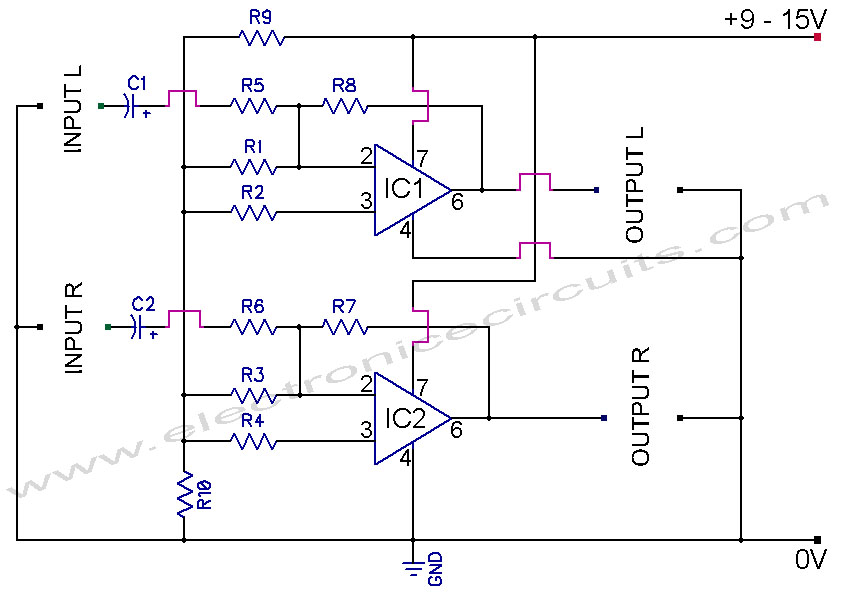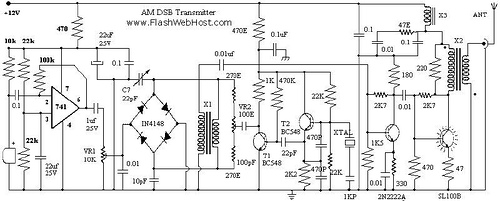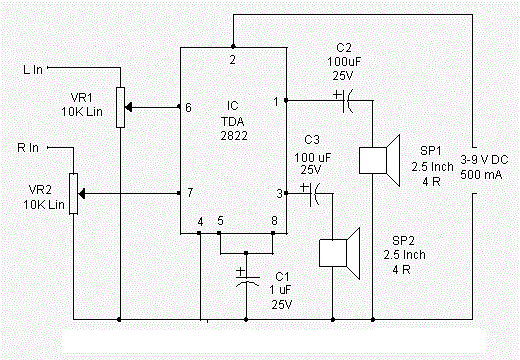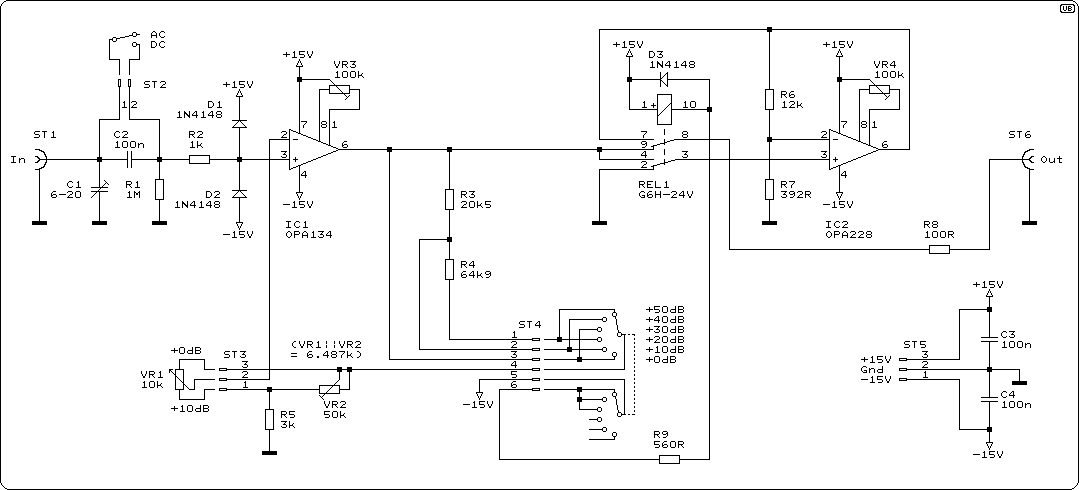
741 Stereo PreAmplifier

741 Stereo PreAmplifier Circuit Diagram. This preamp circuit provides better than 20dB gain in each channel. PARTS LIST R1 -..
The 741 stereo preamplifier circuit is designed to amplify audio signals with a gain of over 20 dB in each channel, making it suitable for various audio applications. The circuit utilizes the popular 741 operational amplifier, which is known for its versatility and reliability in audio processing.
The basic configuration includes two channels, each consisting of an input resistor (R1), feedback resistor (R2), and coupling capacitors to block DC offsets. The gain of each channel can be adjusted by varying the values of R1 and R2, allowing for customization based on the specific requirements of the audio source and desired output level.
In addition to the resistors, the circuit may include bypass capacitors to enhance frequency response and stability. Proper power supply decoupling is also essential to minimize noise and ensure consistent performance. The circuit can be powered by a dual power supply, typically ±15V, to accommodate the operational amplifier's requirements.
The output of the preamplifier can be connected to a power amplifier or other audio processing equipment. It is important to ensure that the output impedance matches the input specifications of the subsequent devices to maintain signal integrity.
Overall, the 741 stereo preamplifier circuit is a robust solution for enhancing audio signals, providing significant gain while maintaining sound quality. Proper component selection and circuit layout are crucial for achieving optimal performance and minimizing interference.741 Stereo PreAmplifier Circuit Diagram This preamp circuit provides better than 20dB gain in each channel. PARTS LIST R1 -.. 🔗 External reference
The 741 stereo preamplifier circuit is designed to amplify audio signals with a gain of over 20 dB in each channel, making it suitable for various audio applications. The circuit utilizes the popular 741 operational amplifier, which is known for its versatility and reliability in audio processing.
The basic configuration includes two channels, each consisting of an input resistor (R1), feedback resistor (R2), and coupling capacitors to block DC offsets. The gain of each channel can be adjusted by varying the values of R1 and R2, allowing for customization based on the specific requirements of the audio source and desired output level.
In addition to the resistors, the circuit may include bypass capacitors to enhance frequency response and stability. Proper power supply decoupling is also essential to minimize noise and ensure consistent performance. The circuit can be powered by a dual power supply, typically ±15V, to accommodate the operational amplifier's requirements.
The output of the preamplifier can be connected to a power amplifier or other audio processing equipment. It is important to ensure that the output impedance matches the input specifications of the subsequent devices to maintain signal integrity.
Overall, the 741 stereo preamplifier circuit is a robust solution for enhancing audio signals, providing significant gain while maintaining sound quality. Proper component selection and circuit layout are crucial for achieving optimal performance and minimizing interference.741 Stereo PreAmplifier Circuit Diagram This preamp circuit provides better than 20dB gain in each channel. PARTS LIST R1 -.. 🔗 External reference





